Menu
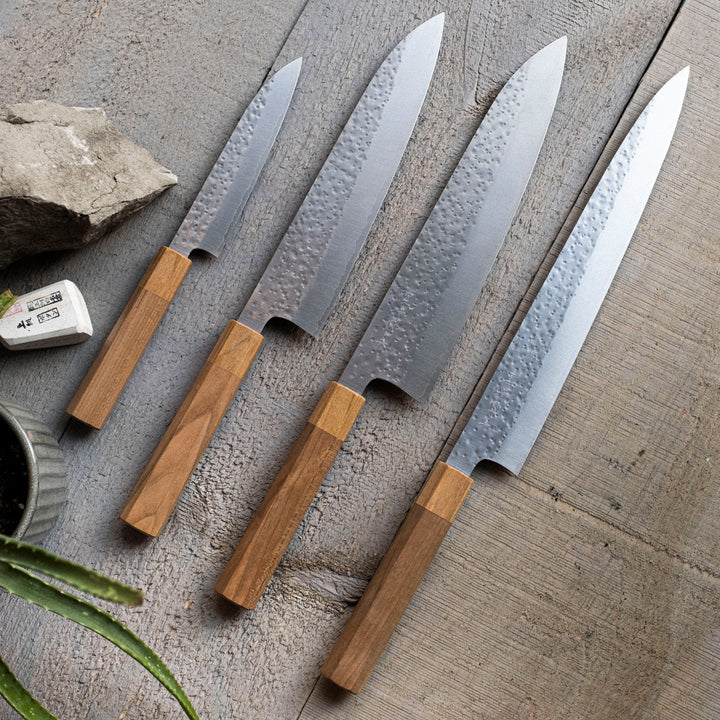
THE BLACKSMITH
MAKOTO KUROSAKI
- Choosing a selection results in a full page refresh.
















Usually ready in 1 hour
| Blade Length | 165 mm |
| Total Length | 318 mm |
| Steel | VG-7 Stainless |
| Handle | Custom |
| Ferrule | Custom |
| Rockwell | 61 |
| Height Spine to heel | 51 mm |
| Width at Spine | 2.1 mm |
| Weight | 164 grams |
| Bevel | Double (50/50) |
Makoto Kurosaki
We're excited to have these knives in made by Makoto Kurosaki. Makoto Kurosaki trained as a sharpener and apprenticed under Hiroshi Kato-san, as part of Takefu Knife Village, based in Echizen city, Fukui prefecture, Japan. While Makoto is Yu Kurosaki’s older brother, he has his own shop separate from Yu's, and has sharpened several different lines from knife makers such as Yoshimi Kato and Takumi Ikeda, as well as Yu Kurosaki.
The “Style-K” line knives still have a great grind and geometry to them, they are slightly more robust than Yu's knives on the spine making them slightly less delicate. The fit and finish on these knives is also of a very high level with a perfectly smooth joint between the tang and handle, and the rounding and polishing on the spine and choil.
The Takefu Knife Village is a cooperative workshop in the Echizen region of Japan. It is the home to a long list of blacksmiths that we work with and many young and upcoming apprentices learning the trade. The area has a 700 year long history of smithing with roots in agricultural tools turned cutlery powerhouse. is a cooperative workshop in the Echizen region of Japan. It is the home to a long list of blacksmiths that we work with and many young and upcoming apprentices learning the trade. The area has a 700 year long history of smithing with roots in agricultural tools turned cutlery powerhouse.
The Knife
The Nakiri is designed to be a vegetable chopping knife. It's edge has less curve which makes it very effective when used in an up and down chopping motion. The flatter blade means the majority of the edge contacts the cutting board helping to avoid those accordion pieces where ingredients aren't cut all the way through. The tall blade also provides lots of travel for the guide fingers further adding to the desirability of the up and down chopping motion.
Follow these care recommendations for your Japanese knives to protect the edge and keep them sharp as long as possible:
All products are shipped within 24 hours. We offer same day shipping for products ordered by 12pm. Please allow 4-7 business days for your shipment to arrive with standard shipping. Expedited shipping options are also available at checkout.
We offer free shipping on orders within Canada over $150 CAD and free shipping on orders to the US over $200 USD.
Curbside pick-up is available at both our Hamilton and Etobicoke locations.
To make sure our customers are always satisfied, we offer full refunds on products for 14 days after receiving them. See our full return policy for details.
More questions? Check out our shipping policy, our return policy, or reach out to us directly.
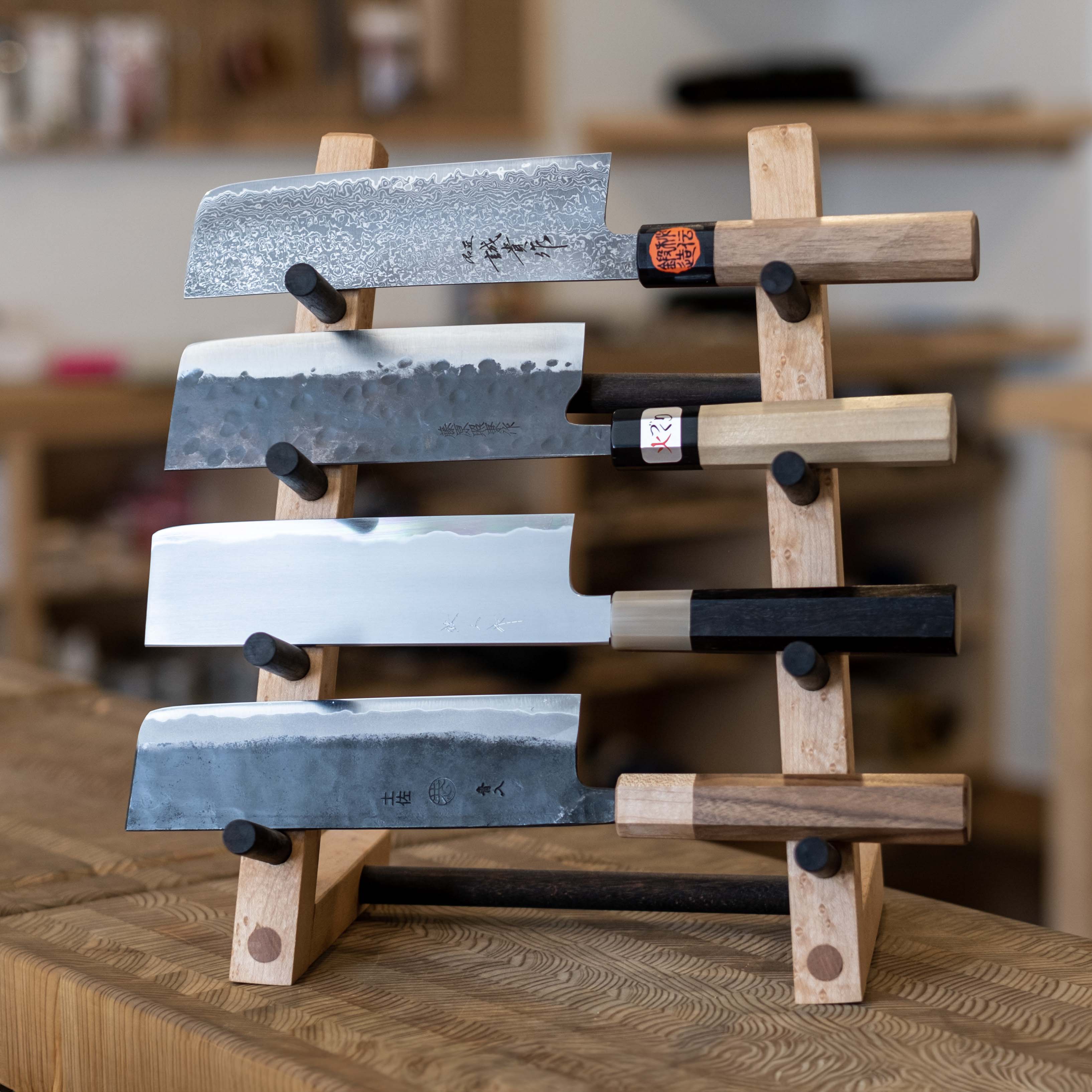

The Nakiri is designed for vegetable chopping. It has a flat profile (less curved blade) that helps the knife make consistent contact with the cutting board when using an up and down chopping motion, helping to avoid pesky accordions of stuck together ingredients. Any well rounded kit should contain a Nakiri, but if this is your first knife you might consider a Gyuto, Santoku or Bunka, as their pointed tips makes them more versatile.
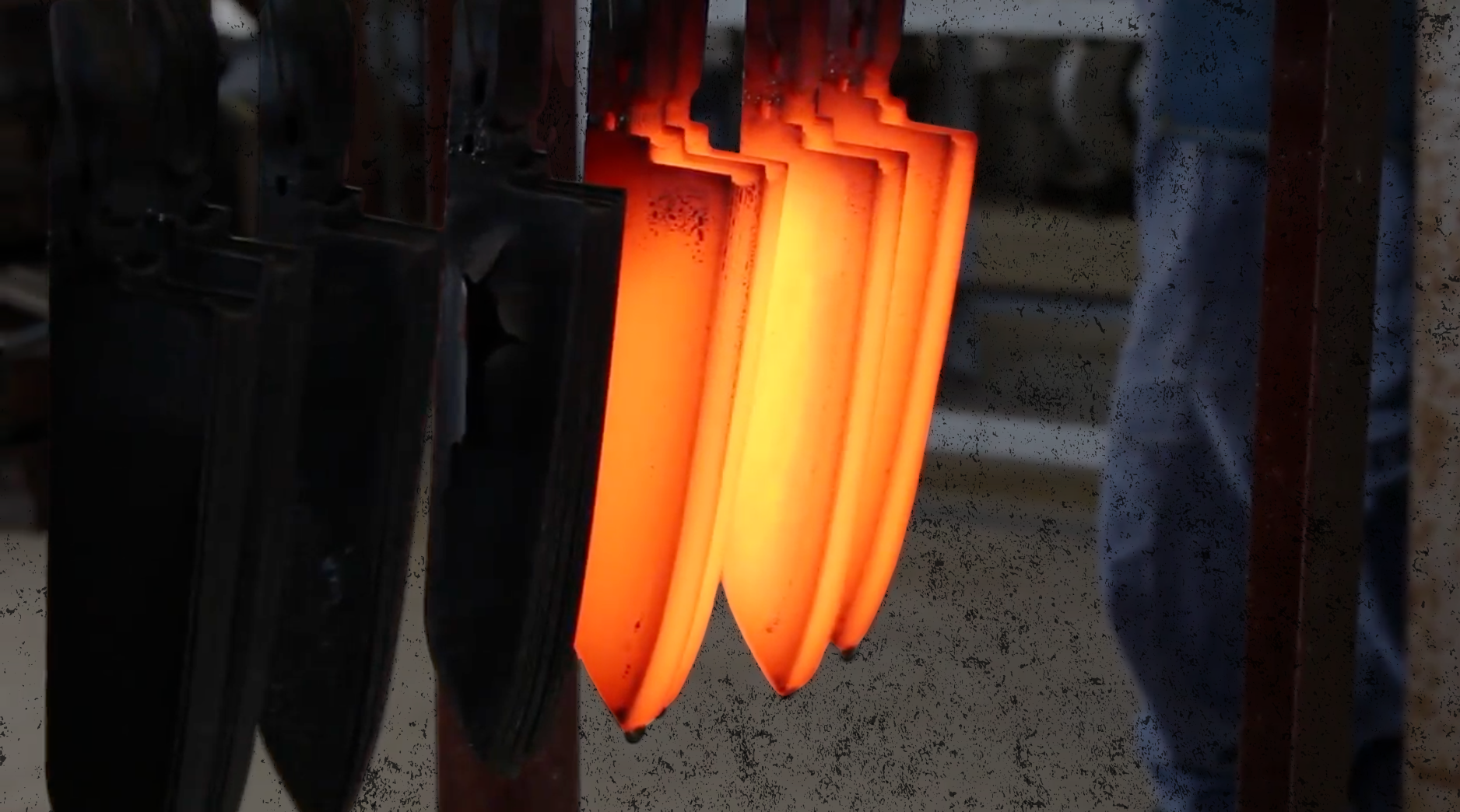
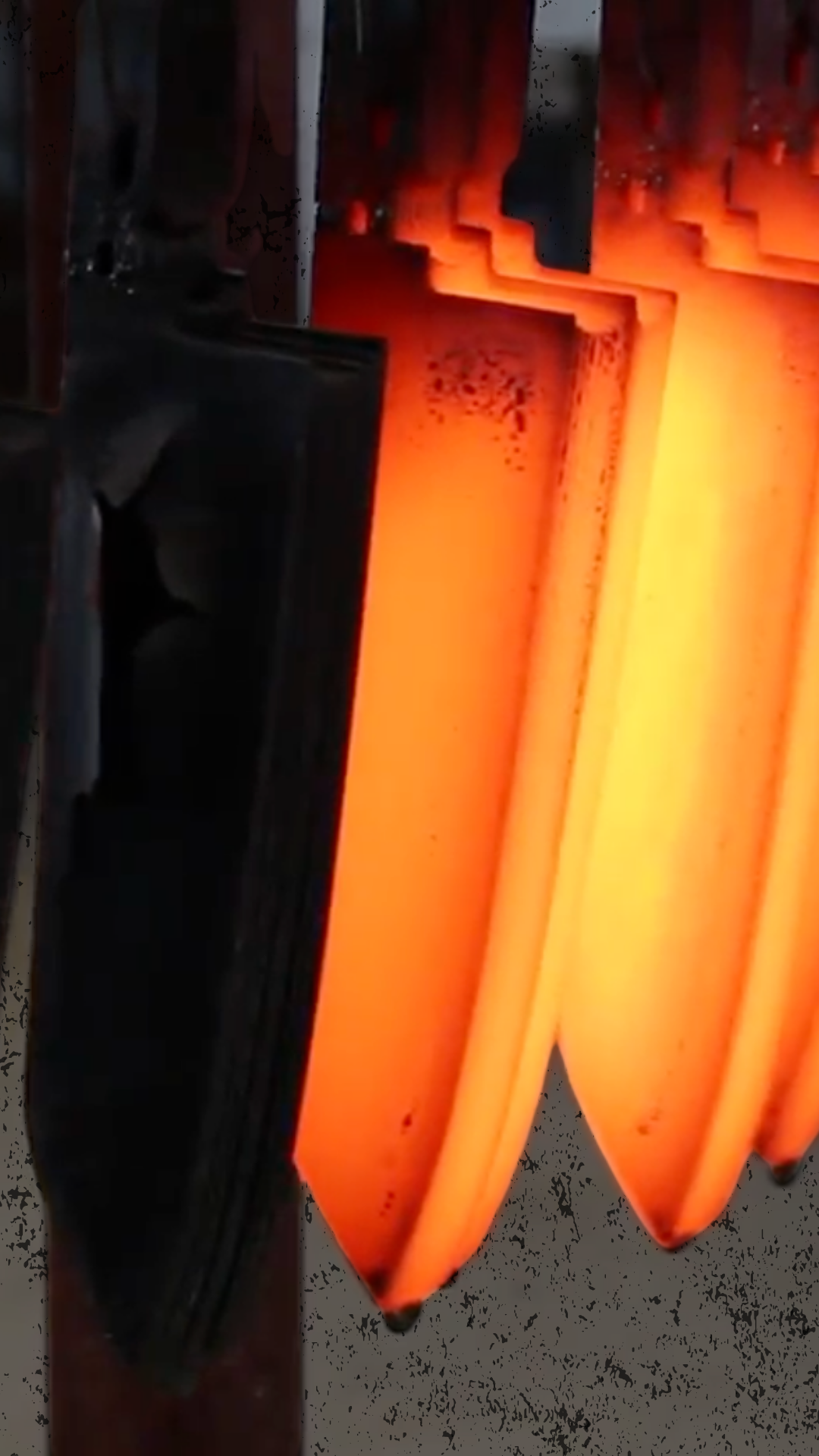
VG-7 Is a great stainless steel that has lots of Tungsten, which contributes to its awesome wear resistance. It is very easy to care for, to keep from rusting, and is able to achieve a good rockwell hardness, which contributes to its high edge retention. In our experience, it is not overly difficult to sharpen, but it is not the easiest steel to sharpen either.
Chemical Composition:
C 1.0% | Cr 14.0% | Mo 0.3% | V 0.15% | W 1.25%
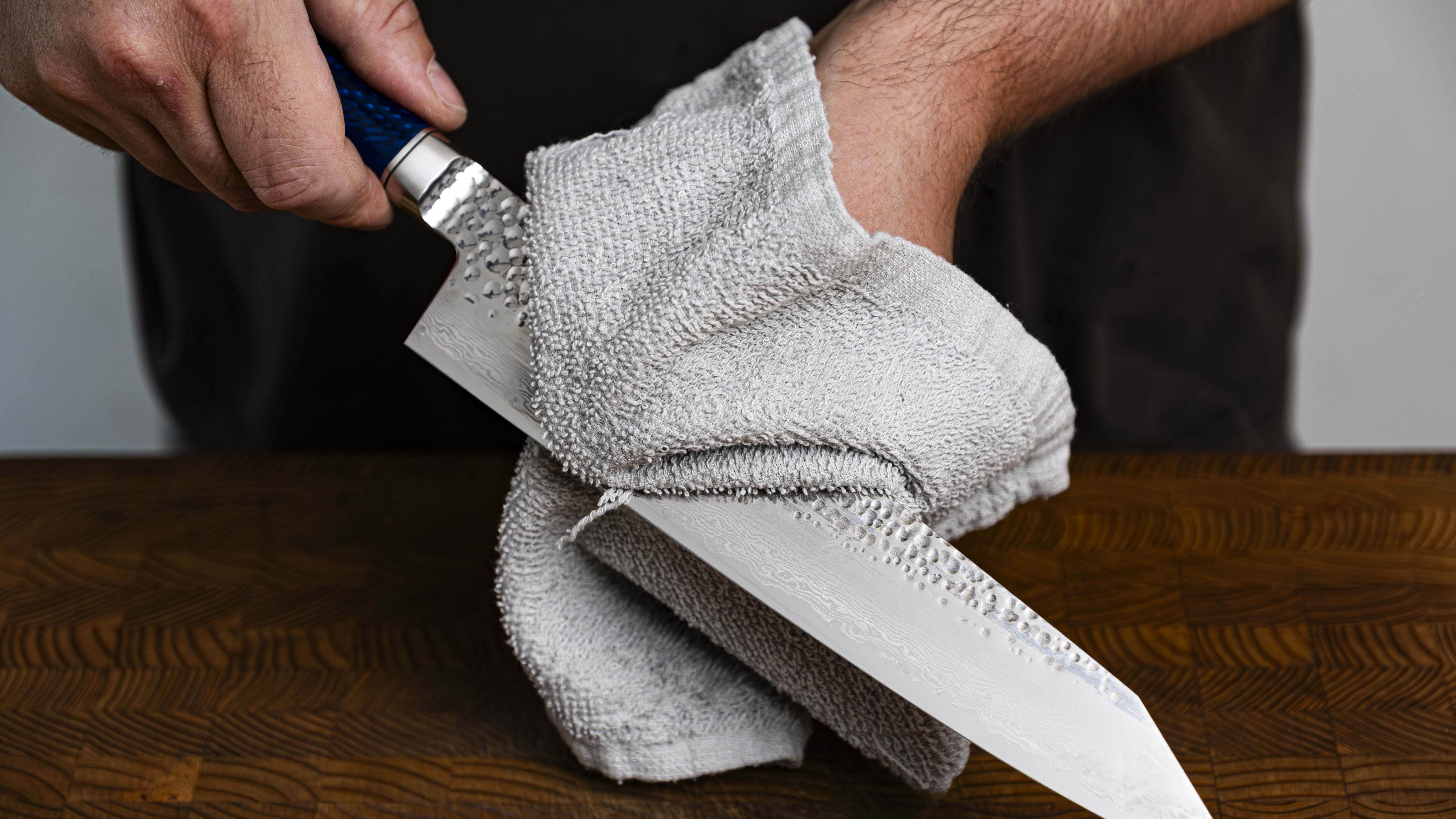

LOW MAINTENANCE
Stainless steel Japanese knives are made in a process called “Sanmai” or “Forge welding” where two softer layers of stainless steel are laminated around a harder core layer of stainless steel. All three of these layers are rust resistant and therefore are not susceptible to rust or discoloration. The softer outer layers of steel are used to make the knife more durable and flexible while the harder core layer is used to provide better edge retention to the blade.

Makoto Kurosaki trained as a sharpener and apprenticed under Hiroshi Kato-san at the Takefu Knife Village in Echizen City, Fukui Prefecture, Japan. Makoto is Yu Kurosaki’s older brother, though he has his own shop and line of knives separate from Yu's. His “Style-K” line knives have a great grind and geometry. They are slightly more robust than Yu's knives on the spine, making them a bit less delicate. The fit and finish is also of high quality with a smooth transition between the handle and ferrule (the joint between the tang and handle) and the rounding and polishing on the spine and choil.
